- Nitin Panchal
- 04 Apr 2023
Applications built with the MEAN stack follow the client-server architecture. The client, built with Angular, can be a web application, a native mobile application, or a desktop application. The client communicates with the server through an API, which is built with Express. The server then manages the requests with the MongoDB database.
MEAN is a technology stack used for building full stack applications. It's a combination of the following technologies:
MongoDB—document database Express—a Node.js framework for building APIs Angular—front-end application framework Node.js—server-side JavaScript runtime environment
This Project covered
In this tutorial, we'll build a RESTful API that implements the CRUD (Create, Read, Update, Delete) operations for an product. For data persistence, we'll be using a MongoDB Atlas cluster.
We'll be building an product management web application. The interface will have the following pages:
- View all Product
- Add to Product
- Order the Product (Realtime is not) and Track, generate invoices
- Update existing Product and more
Home page
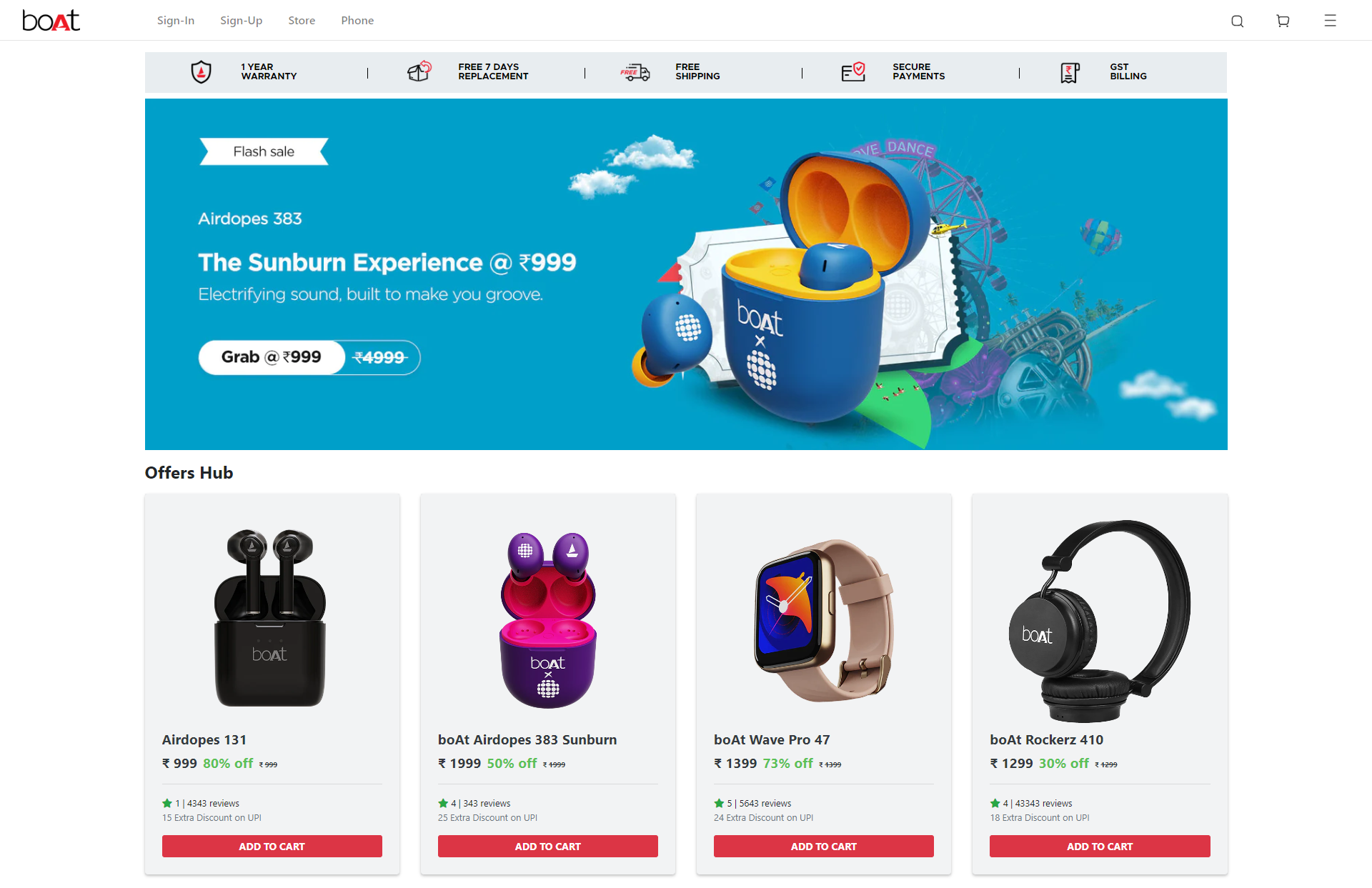
Product Detail
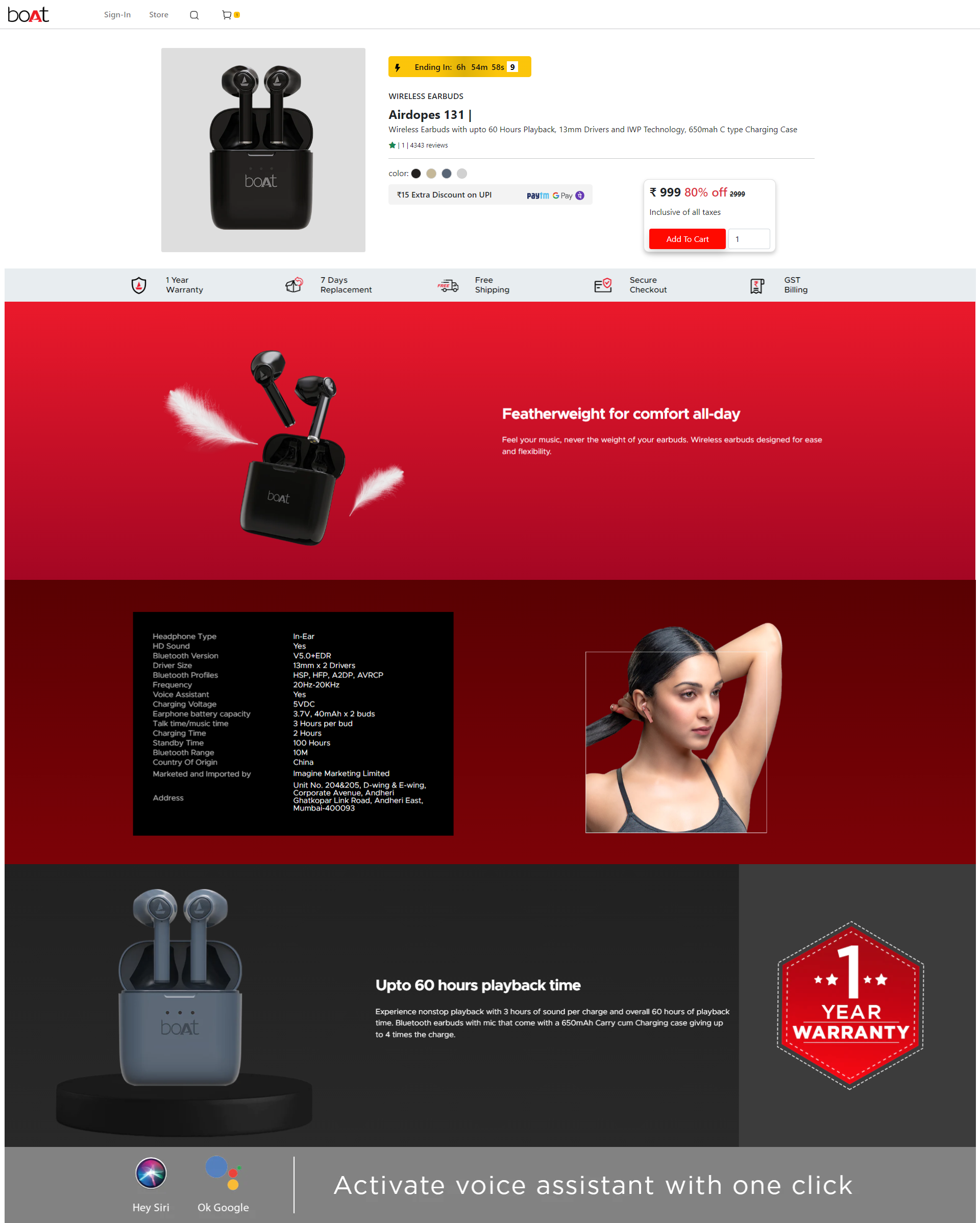
Cart Page
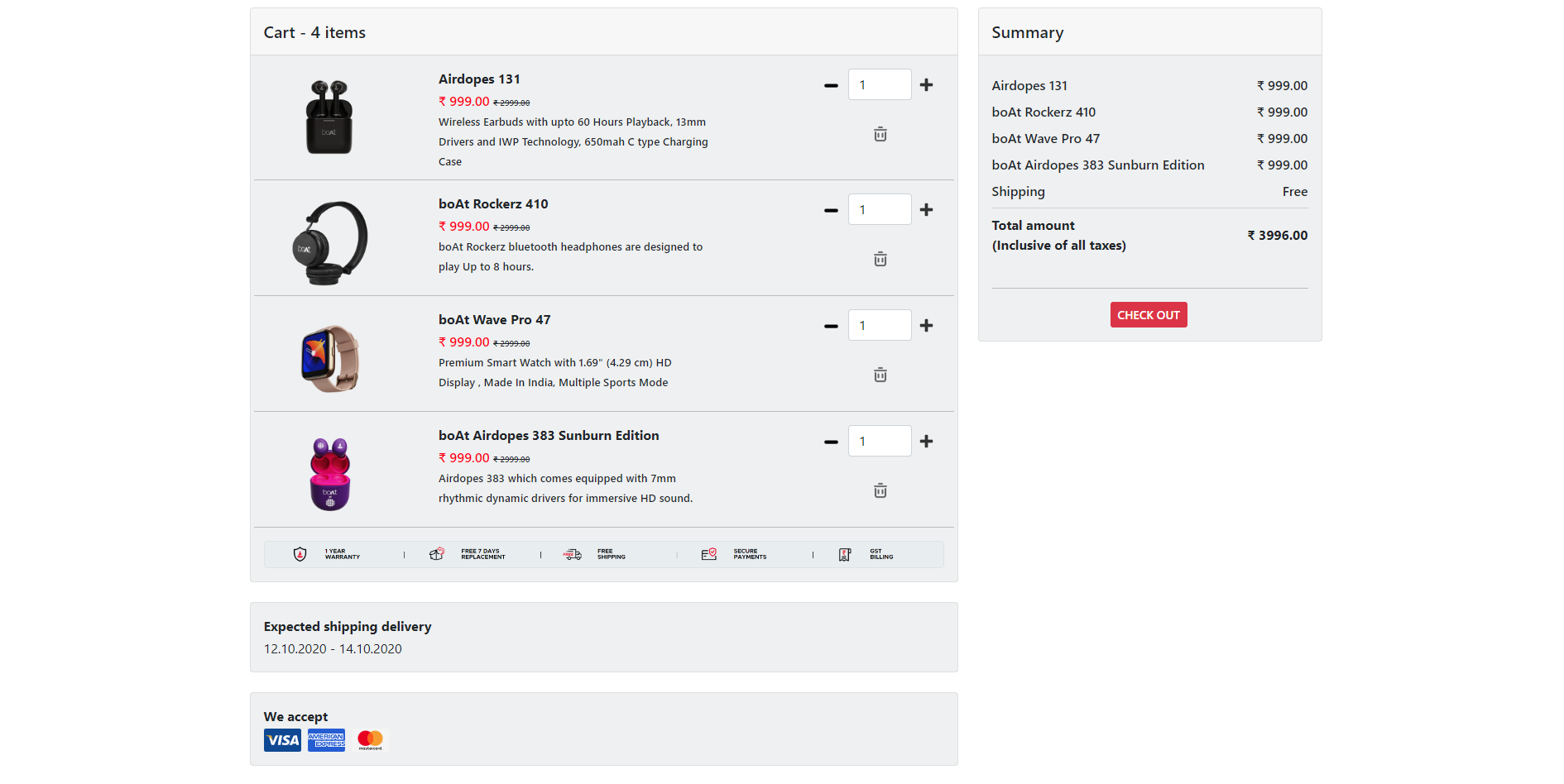
Orders page
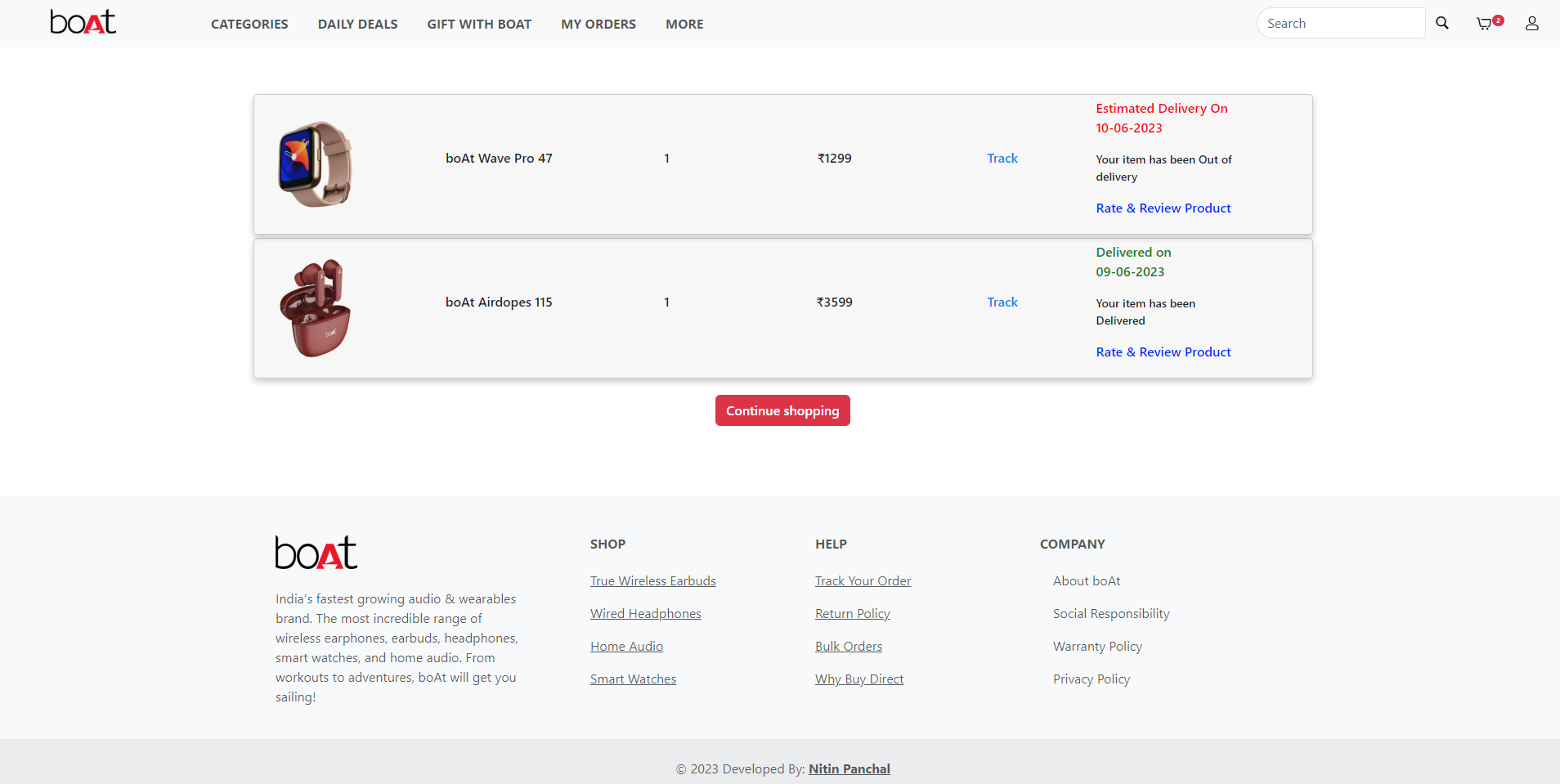
Estimated Delivery

Delivered page

Download Invoice page
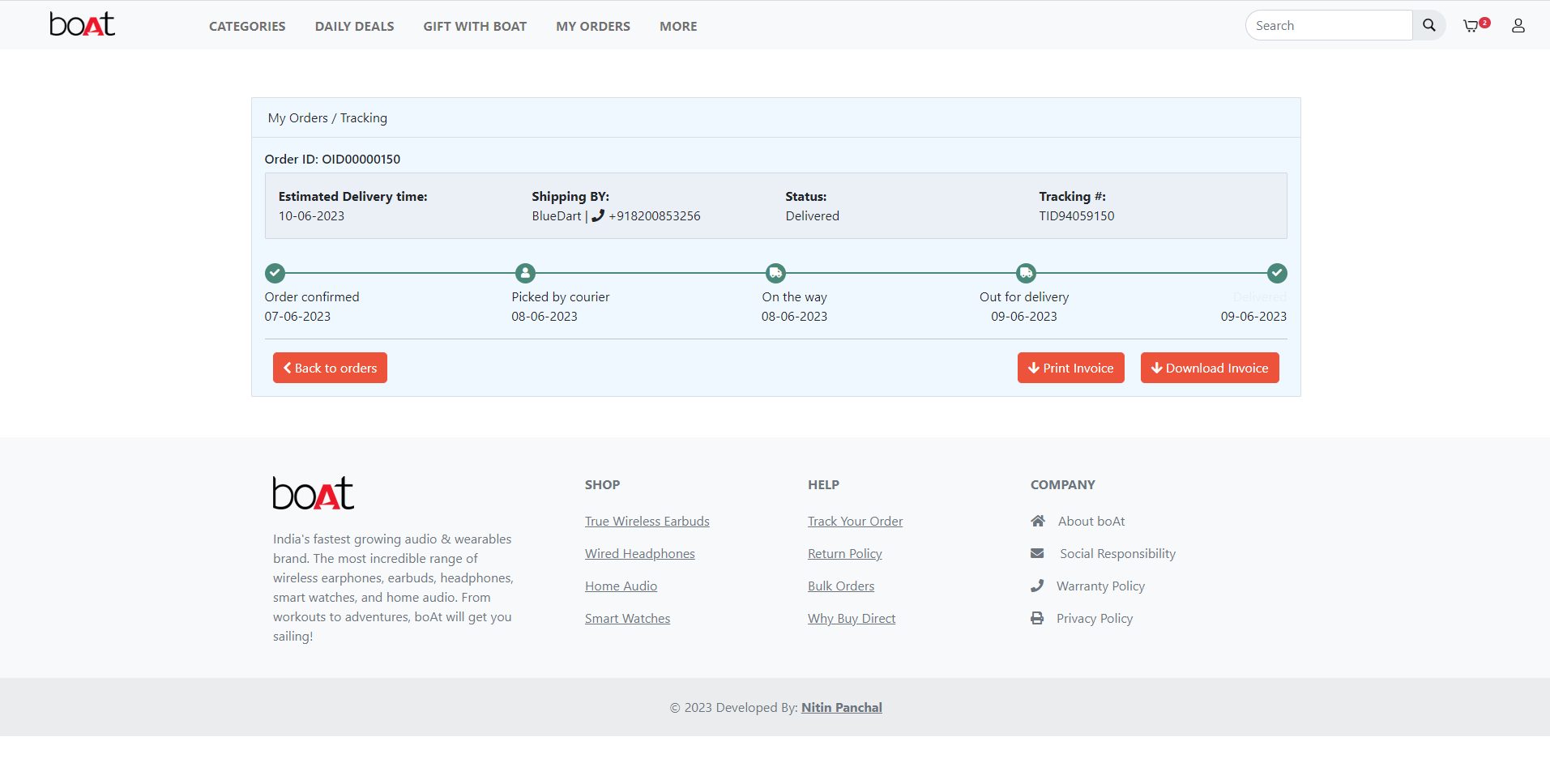
View Invoice page
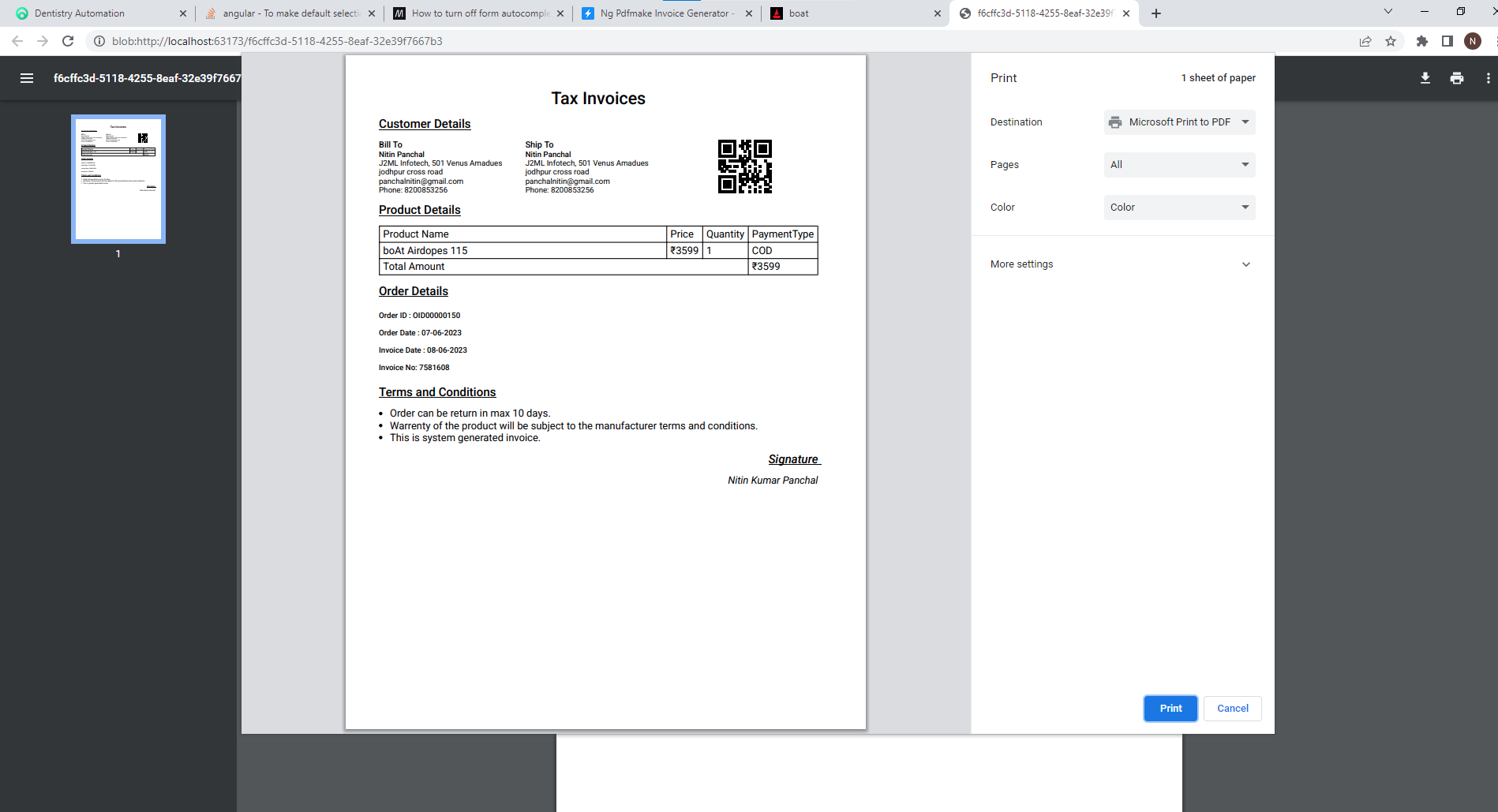
Conclusion
Thank you for joining me on this journey and following along! I hope you enjoyed it and learned a lot. The MEAN stack makes it easy to get started and to build scalable applications. You're using the same language throughout the stack: JavaScript. Additionally, MongoDB's document model makes it natural to map data to objects and MongoDB Atlas's forever-free cluster makes it easy to host your data without worrying about costs.